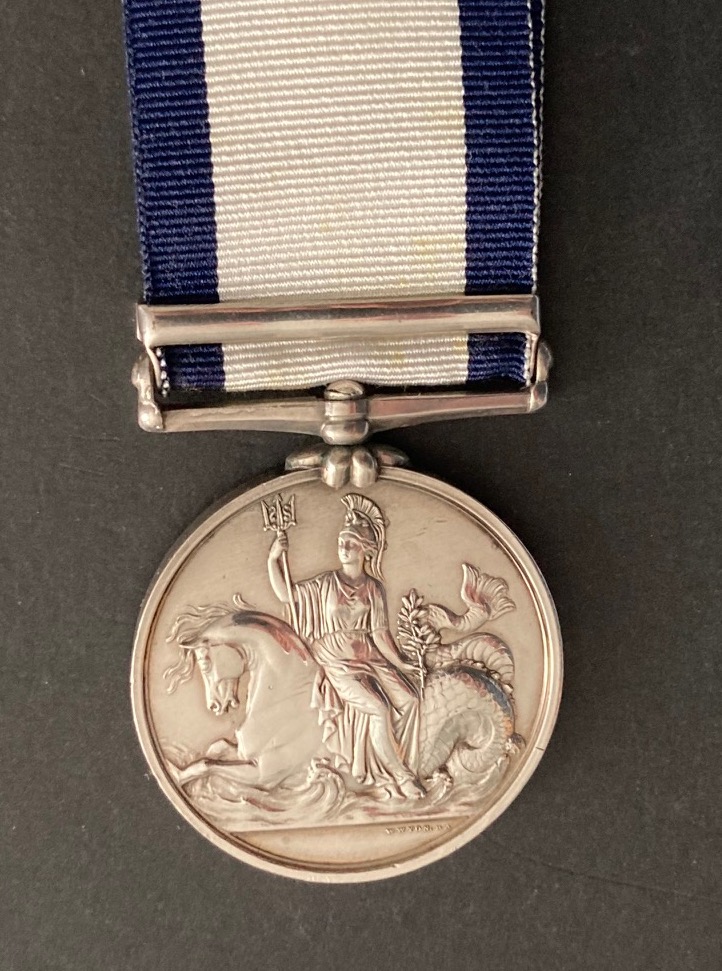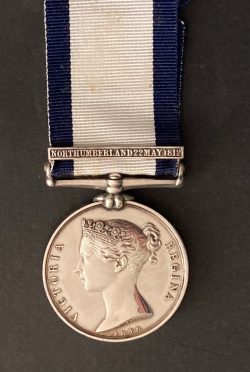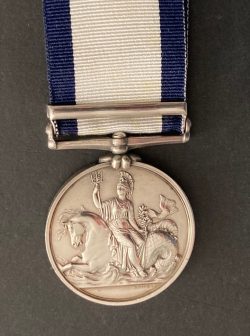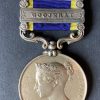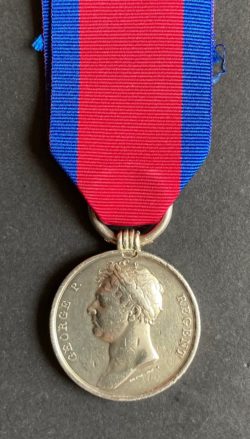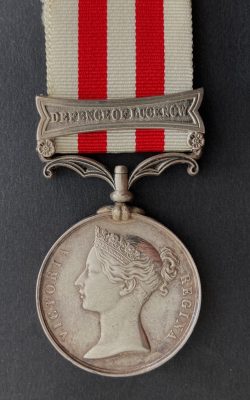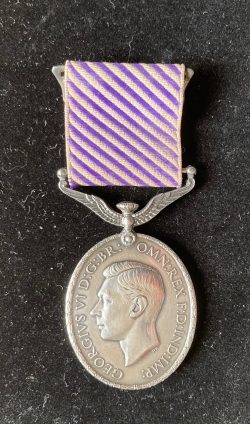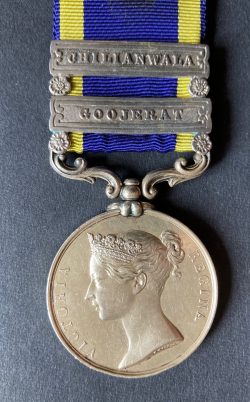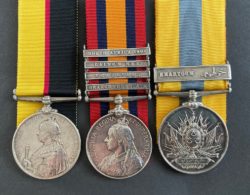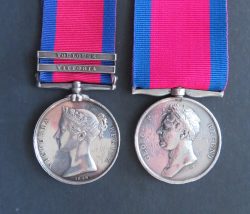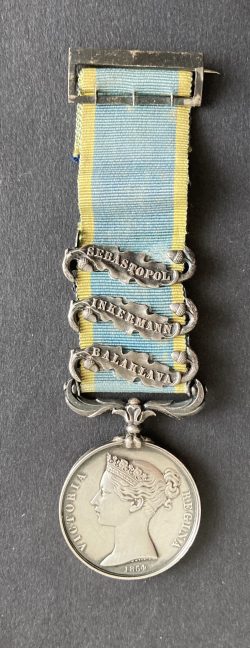N.G.S. clasp, Northumberland 22 May 1812, Midshipman, later lieutenant who previously had in 1809 lost a leg in an attack upon a large convoy in the Adriatic
£7,100.00
1 in stock
N.G.S. clasp, Northumberland 22 May 1812,
E.J. Piper, Midshipman,
Lieutenant Edmund John Piper, b. Ludford, Shropshire, 1791Ent. the Navy 1806, Fst.-Cl. Vol. aboard the Belleisle, (74) Capt. William Hargood, and present 14 Sept. the following year at the destruction off Cape Henry, of the 74 – Imperiteaux. He accompanied Capt. Hargood as Midshipman, in July 1807, into the Northumberland (74). Present on 22 May, 1812, aboard Northumberland, in company with the gun-brig Growler, at the gallant destruction of the French 40-gun frigates L’Arienne and L’Andromache and the 16-gun brig Mamelouk, whose united fire, conjointly with that of a heavy battery, killed 5 and wounded 28 of the Northumberland’s people. He had previously, in 1809 lost a leg in an attack upon a large convoy in the Adriatic. He was made Lieutenant 21 Nov. 1812. Invalided home May 1813 and since on half pay. In consideration of his wound he received a grant from the Patriotic Fund, and awarded , 28 May, 1816 a pension of £91. 5s. per annum.
Died 1861, buried Pencombe, Herefordshire Admiralty records hold two logs as kept by Edmund Piper whilst aboard Northumberland,
On 9 January 1812, a French frigate squadron left Nantes to attack British and American shipping in the Atlantic, off the Azores and Bermuda. The squadron comprised the two 18-pounder 40-gun frigates Ariane and Andromaque, under Captains Jean-Baptiste-Henri Féretier and Nicolas Morice respectively, and the 16-gun brig Mameluck, under Captain Galabert. Feretier was the commanding officer of the squadron. The French squadron, reached its patrolling area and started preying on merchant shipping. In the course of four next months, it took 36 prizes (9 British, 3 Portuguese, 1 Spanish, 1 Swedish and 11 American), and made 217 prisoners.
The 74-gun HMS Northumberland, under Captain the Honourable Henry Hotham, was ordered to attempt to intercept the frigates and bring them into action. Northumberland detached on 19 May and took position off the point of Isle Groix. In the morning of 22 May, the French squadron arrived off the Roches de Penmarch. Around 11:30, a large sail appeared in the North, which was soon recognised to be the 74-gun HMS Northumberland. Feretier decided to sail through by force. However, Morice signaled that one of his crewmembers, Ensign Legrand, was familiar with the area and thought himself capable of leading the frigates through a shallow pass where they could slip and distance Northumberland. Feretier decided to take his chance with this idea, and ordered Andromaque to lead, leaving Mameluck free to manoeuver at will. Around 15:00, the frigates came within range of Northumberland, which waited near Pointe du Talut. Northumberland fired a few shots, to which Andromaque, supported by coastal defence batteries, responded with her whole broadside.
A full artillery exchange broke out, obscuring the view of the ships with smoke and killing Ensign Legrand on Andromaque. Officer Legros, the only other officer on Andromaque familiar with these waters, took over the pilotage, but around 17:45, Andromaque ran aground on the Northern part of Basse Grasie reef. Ariane reacted by turning on her right, but soon also ran aground. Seeing the danger, Northumberland immediately retreated, and took the opportunity to repair the damage caused to her rigging by the cannonade, particularly her fore topmast. With Mameluck the only ship able to manoeuver, Feretier ordered the brig to sail to Lorient and request assistance. Mameluck attempted to execute the order, but also ran aground, close to Ariane. With the resceding tide, the frigates started to list so much that they threw their starboard artillery overboard, emptied their water reserves and removed all unnecessary cargo. Soon afterwards, Northumberland returned, along with the 12-gun Growler, anchored North of the frigates, and started a two-hour bombardment, to which the frigates were unable to respond, save for a handful of carronades on Andromaque. After the first few shots, at 5:55, a fire broke out in the fore top of Andromaque; with his fire pump shattered, Morice ordered the mast cut down, but all the men assigned to the task were killed or wounded by British shots, and fire soon engulfed the forecastle. With the water intake well above the sea, it was impossible to flood the powder room. Feretier sent an ensign to Andromaque, who returned to bring the news that the fire was beyond control; he then ordered the 86 sick and the prisoners taken to the boats that had come from Lorient.
Northumberland having departed, the préfet maritime went to the site of the battle. Feretier reported that the hull of Ariane was riddled with shot to starboard and filled with water, and that the pilots deemed her impossible to refloat. The préfet then ordered Ariane abandoned, and Feretier had her set afire to prevent her capture. By 8:20, the crew had come ashore and the officers embarked on boats for Lorient; Andromaque exploded soon afterwards. Ariane exploded in the night, at 2:30. Mameluck had cut her topmasts and thrown her artillery overboard in fruitless attempts to refloat, and had been abandoned by her crew because a number of the shots below the waterline made her impossible to sail into combat. However, she had not suffered as much as the frigates, and the next day, a party returned to Mameluck and succeeded in refloating her. She reached Lorient on 24, only survivor of the squadron.
A lovely frigate action officers medal and particularly good condition.
